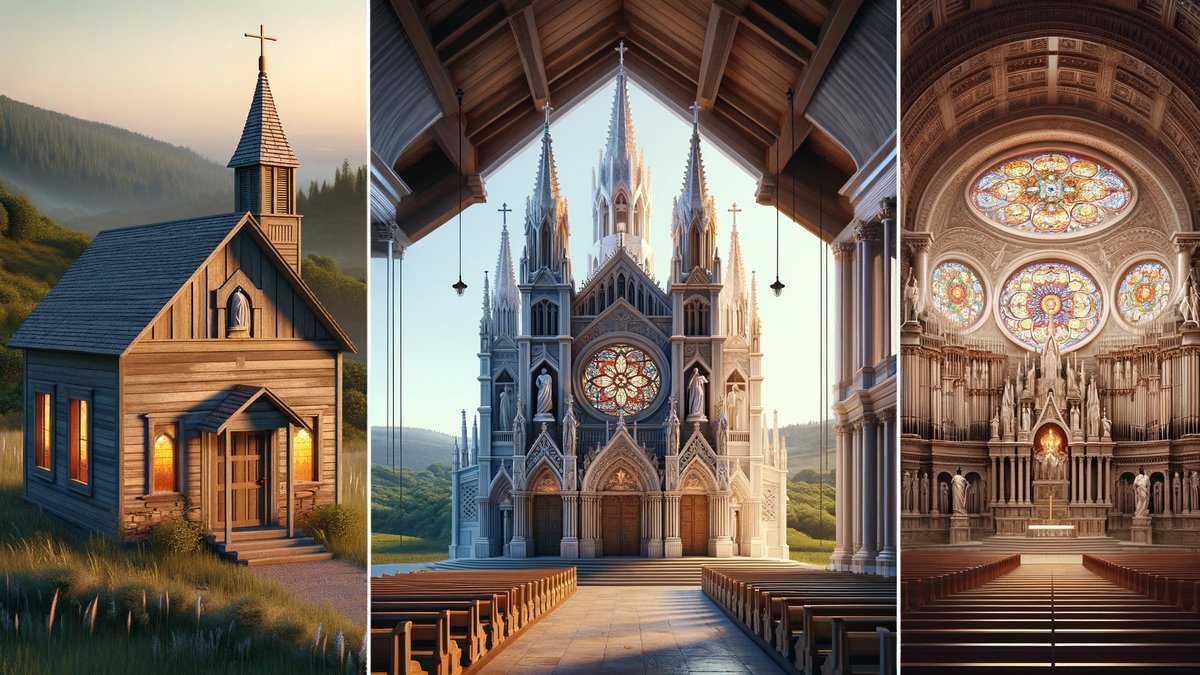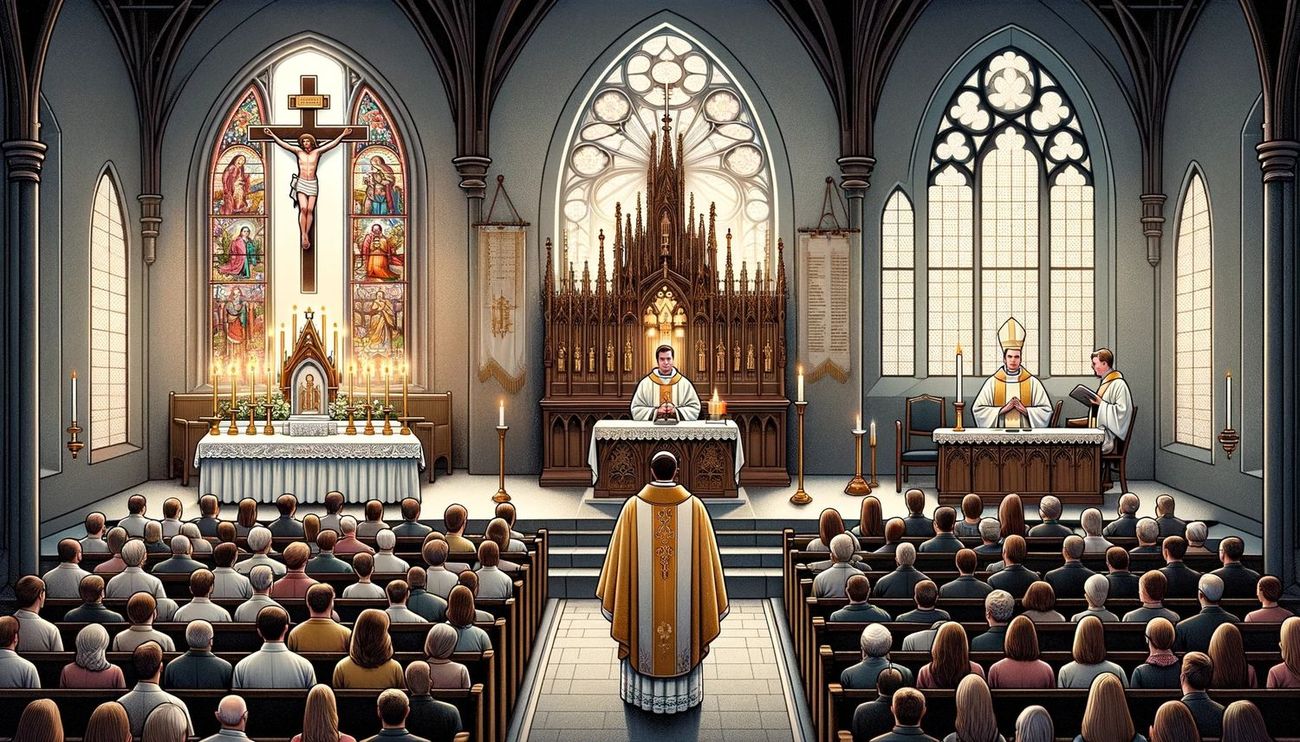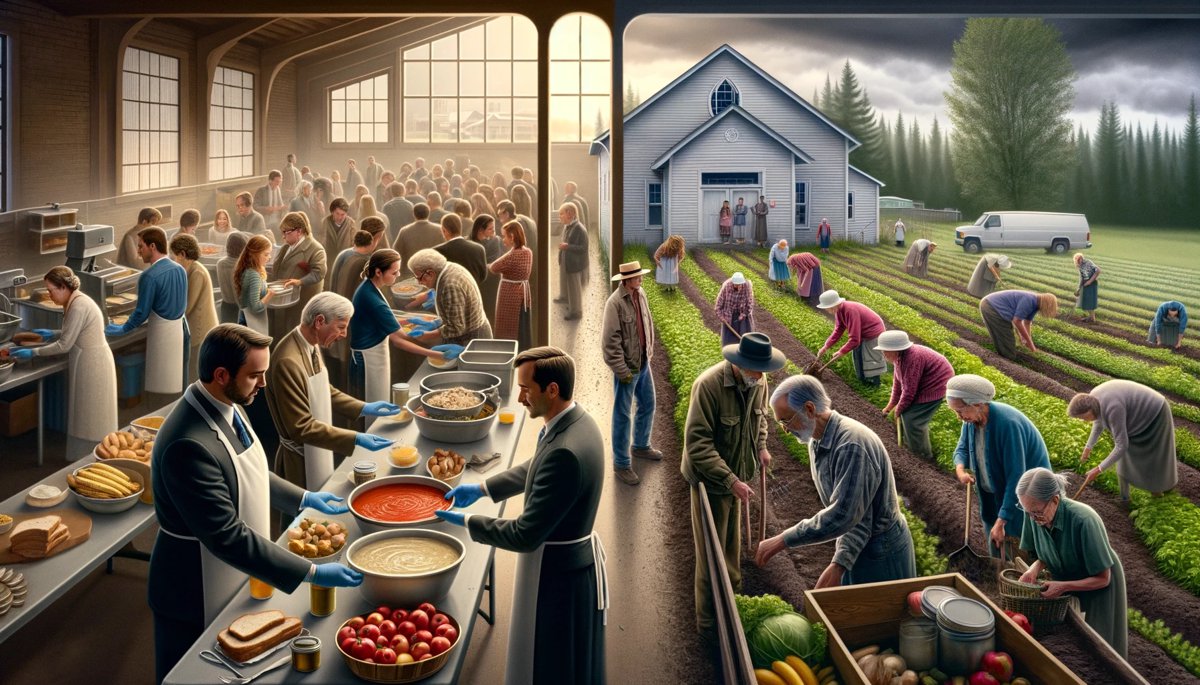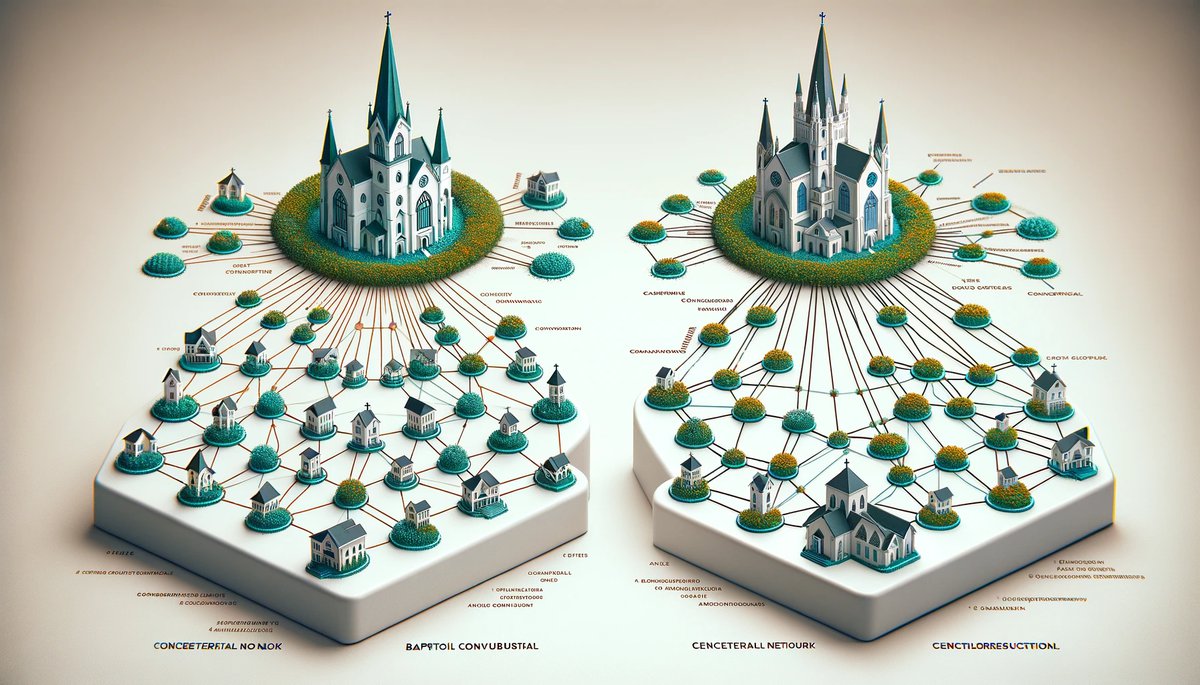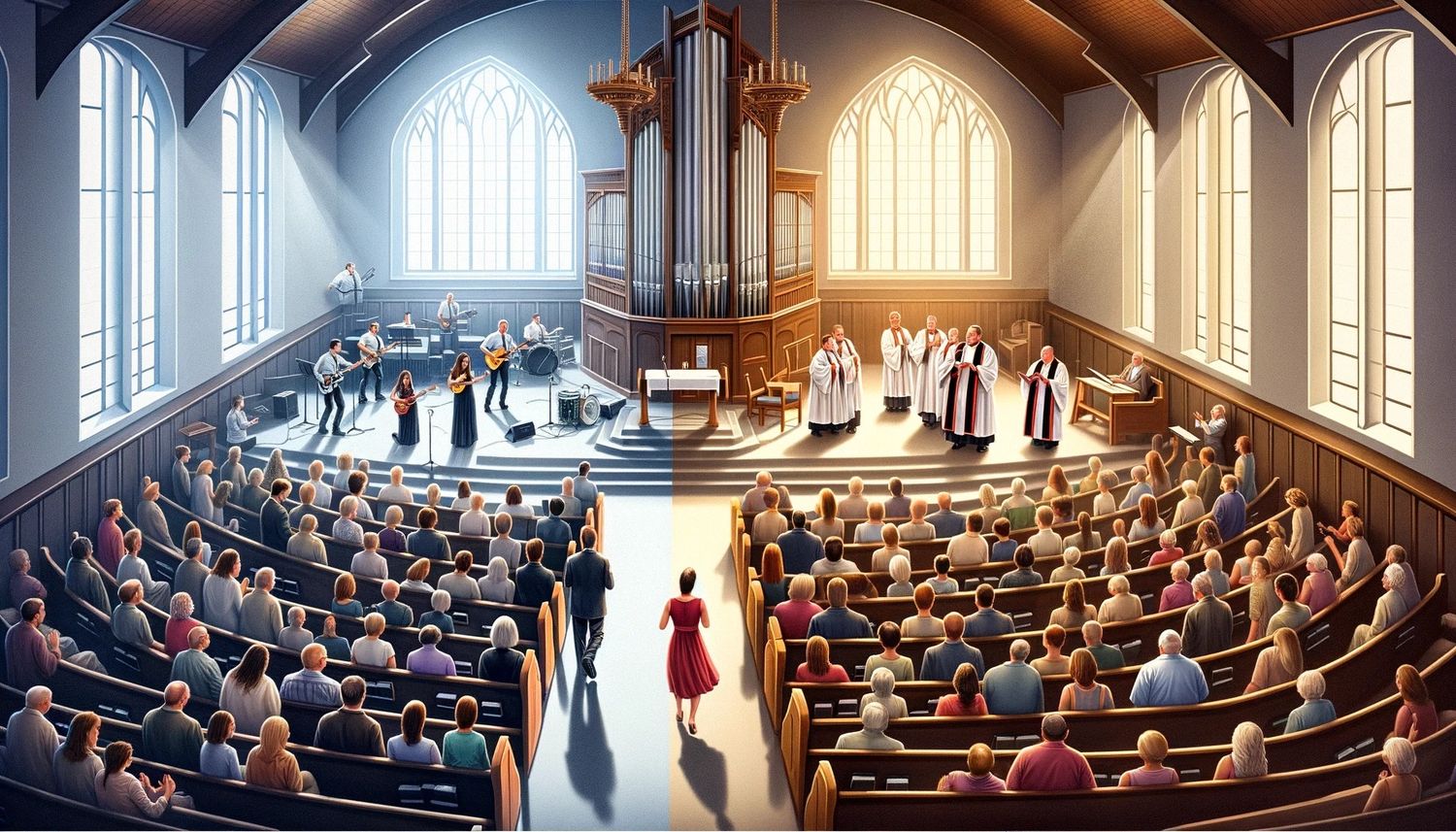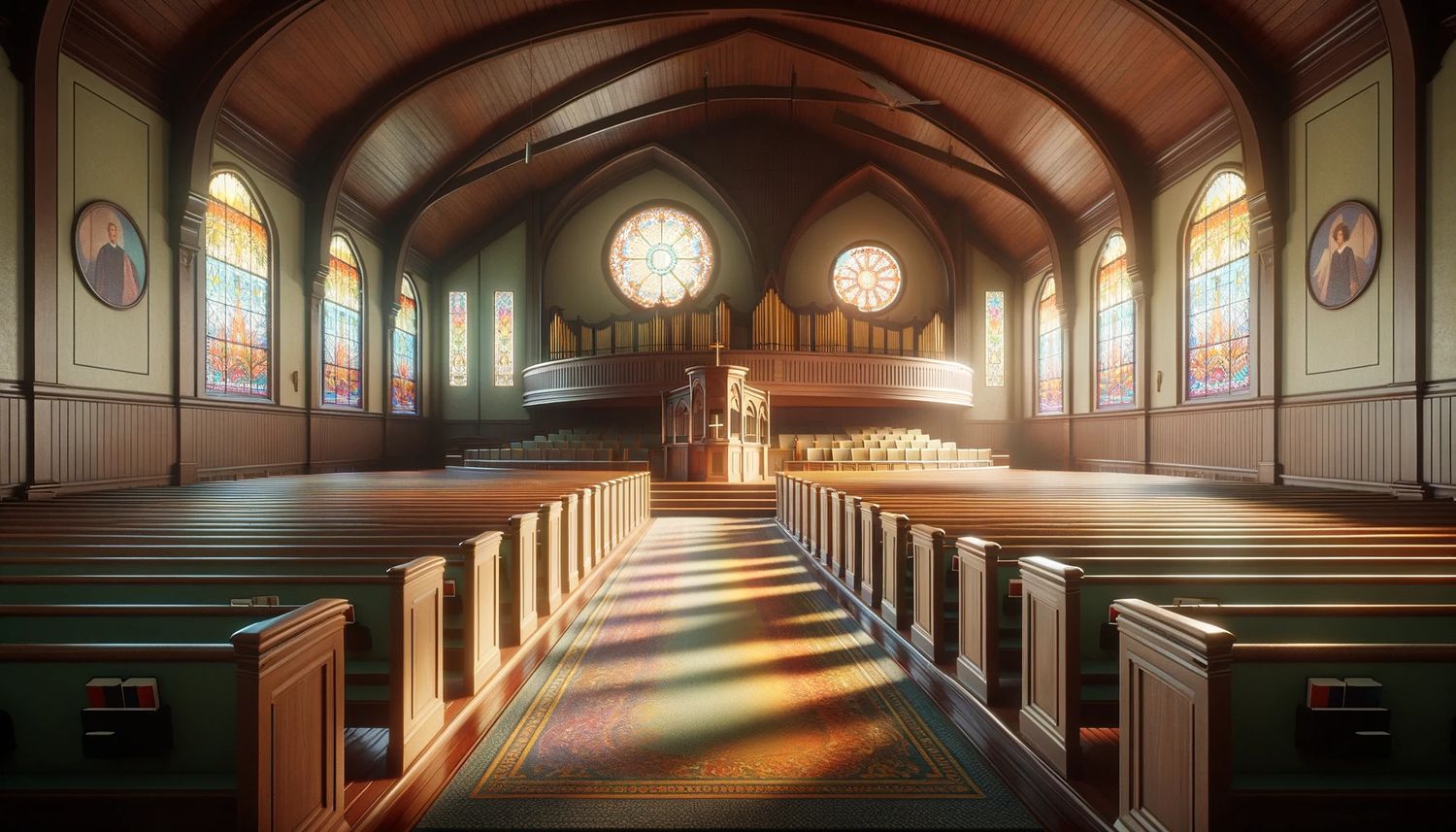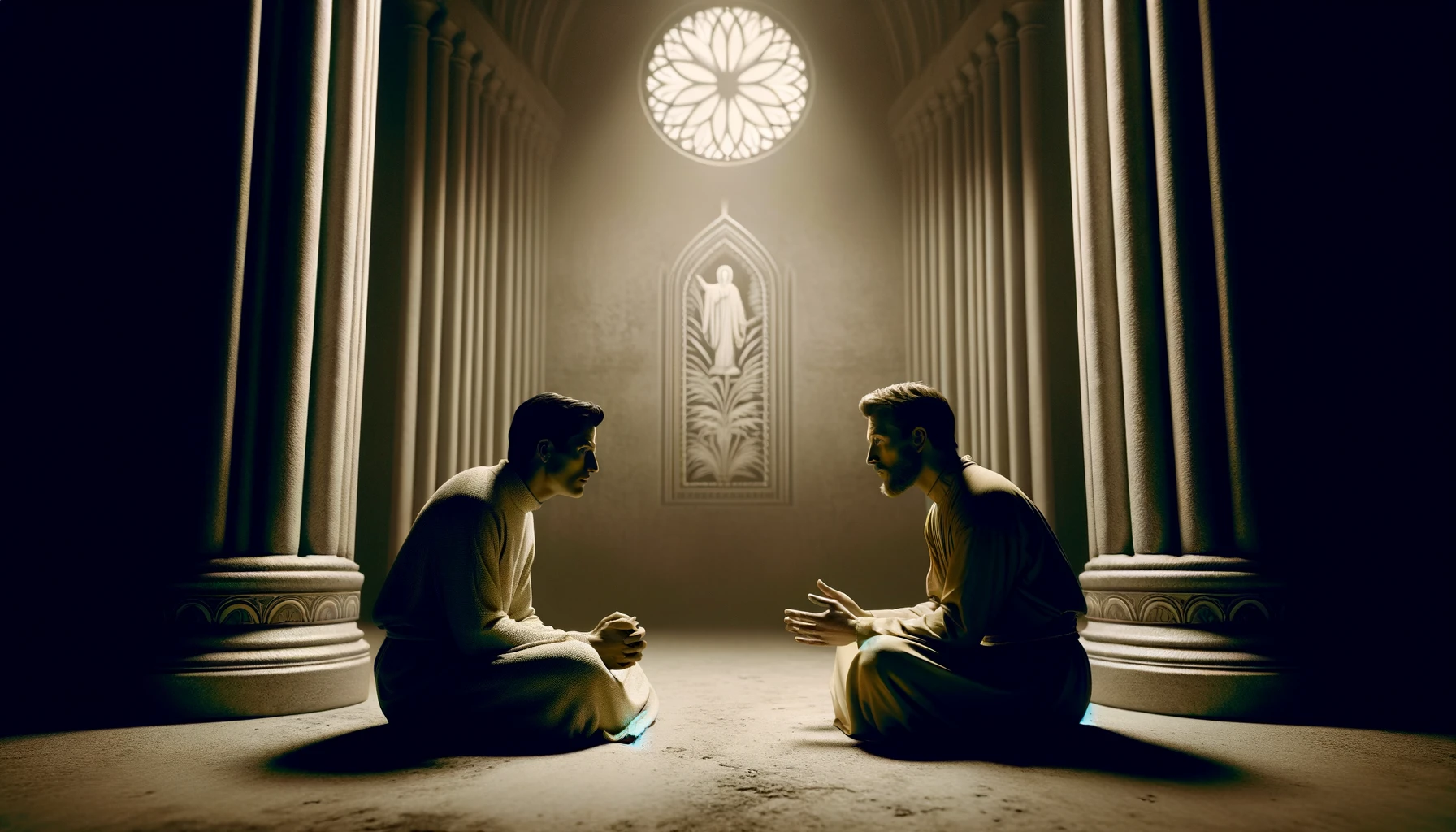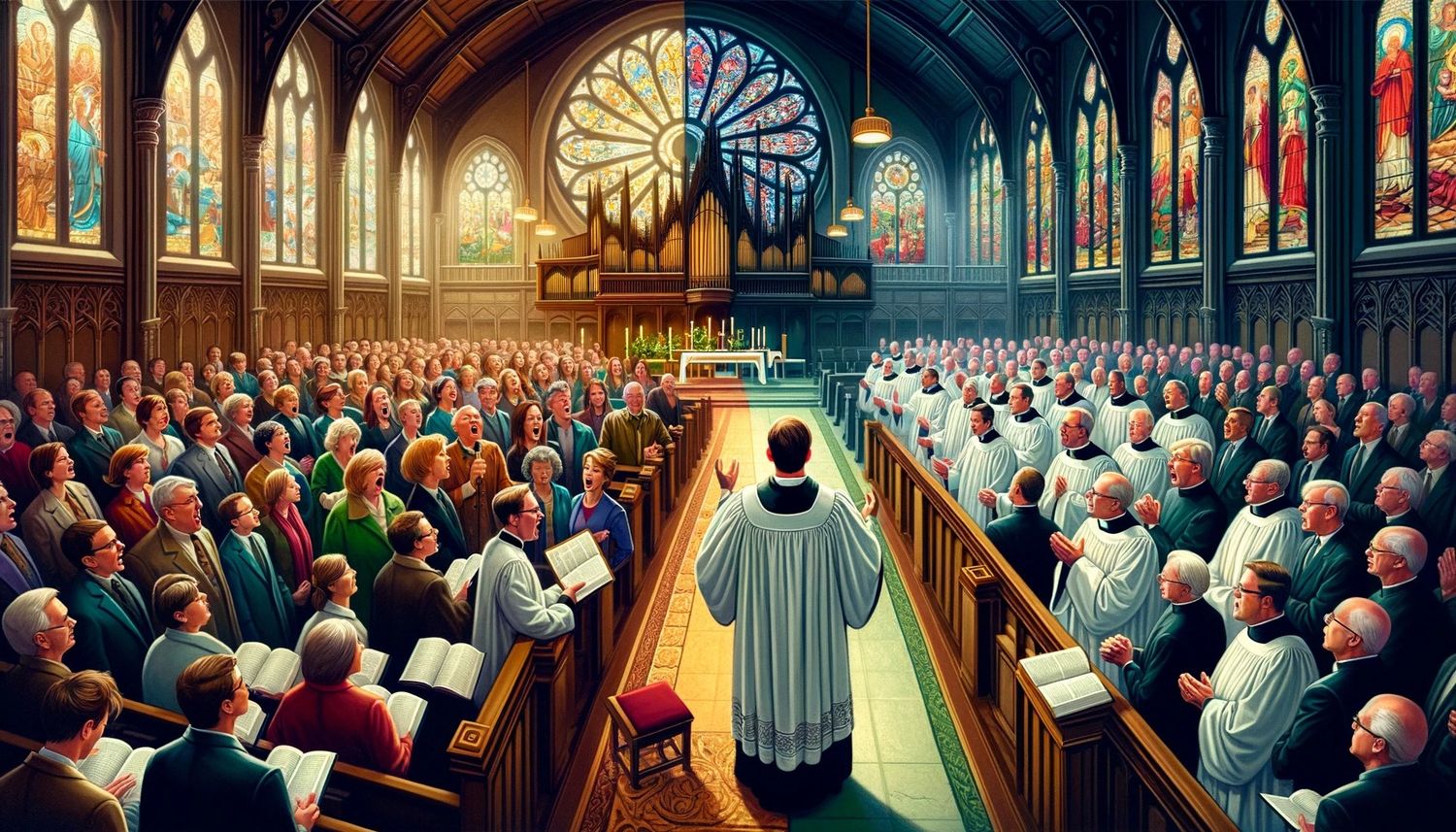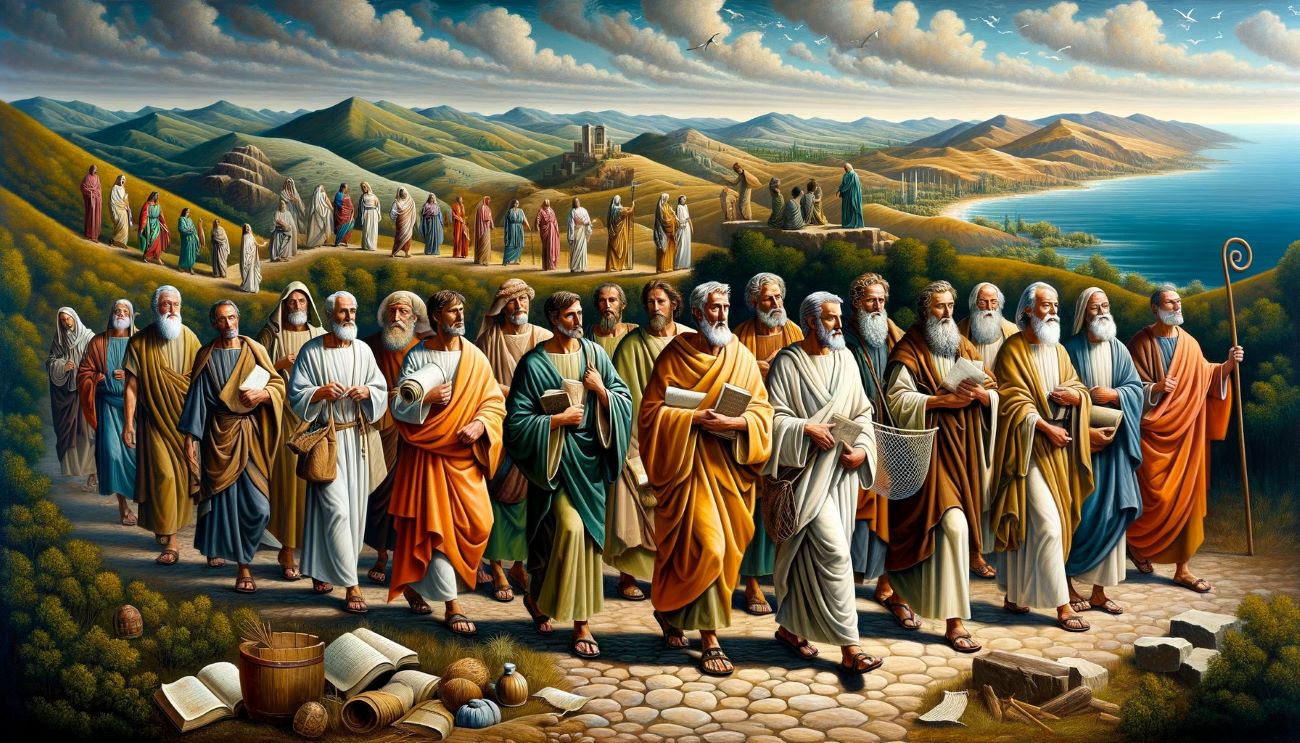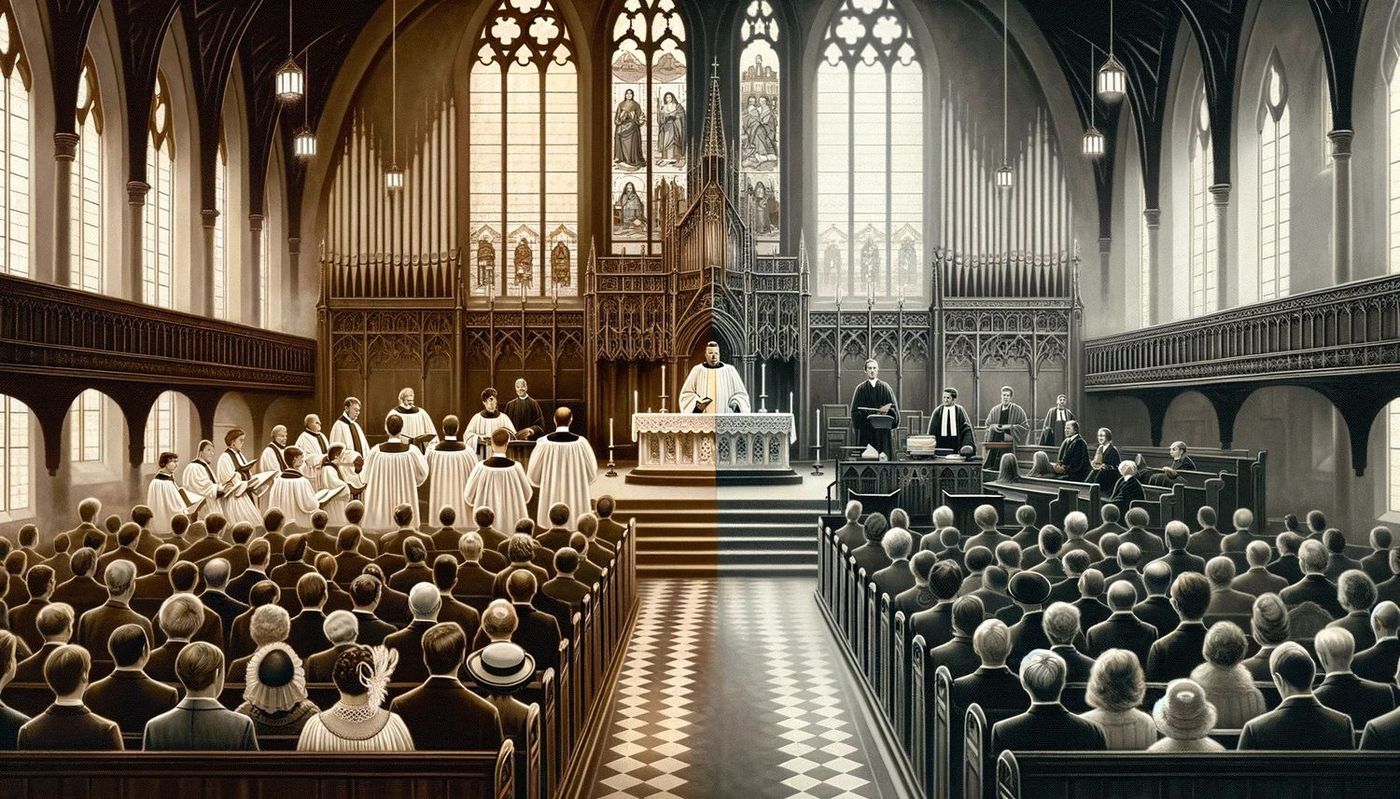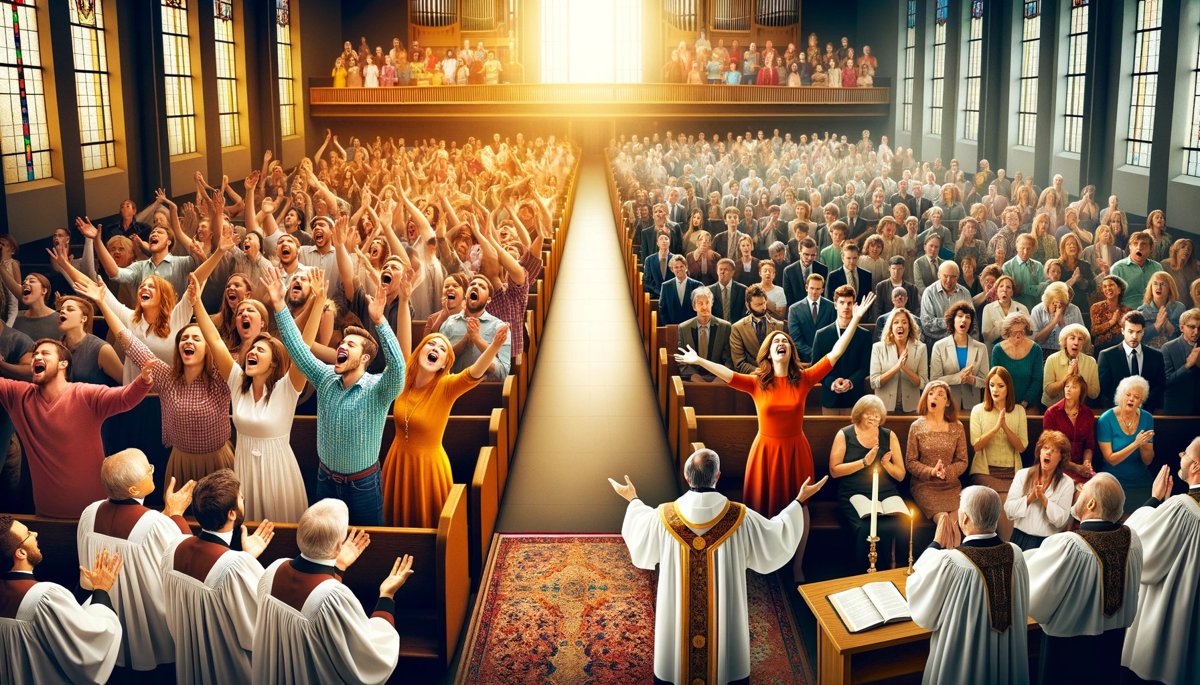Home>Arts and Culture>What Is The Difference Between An Abbey And A Cathedral
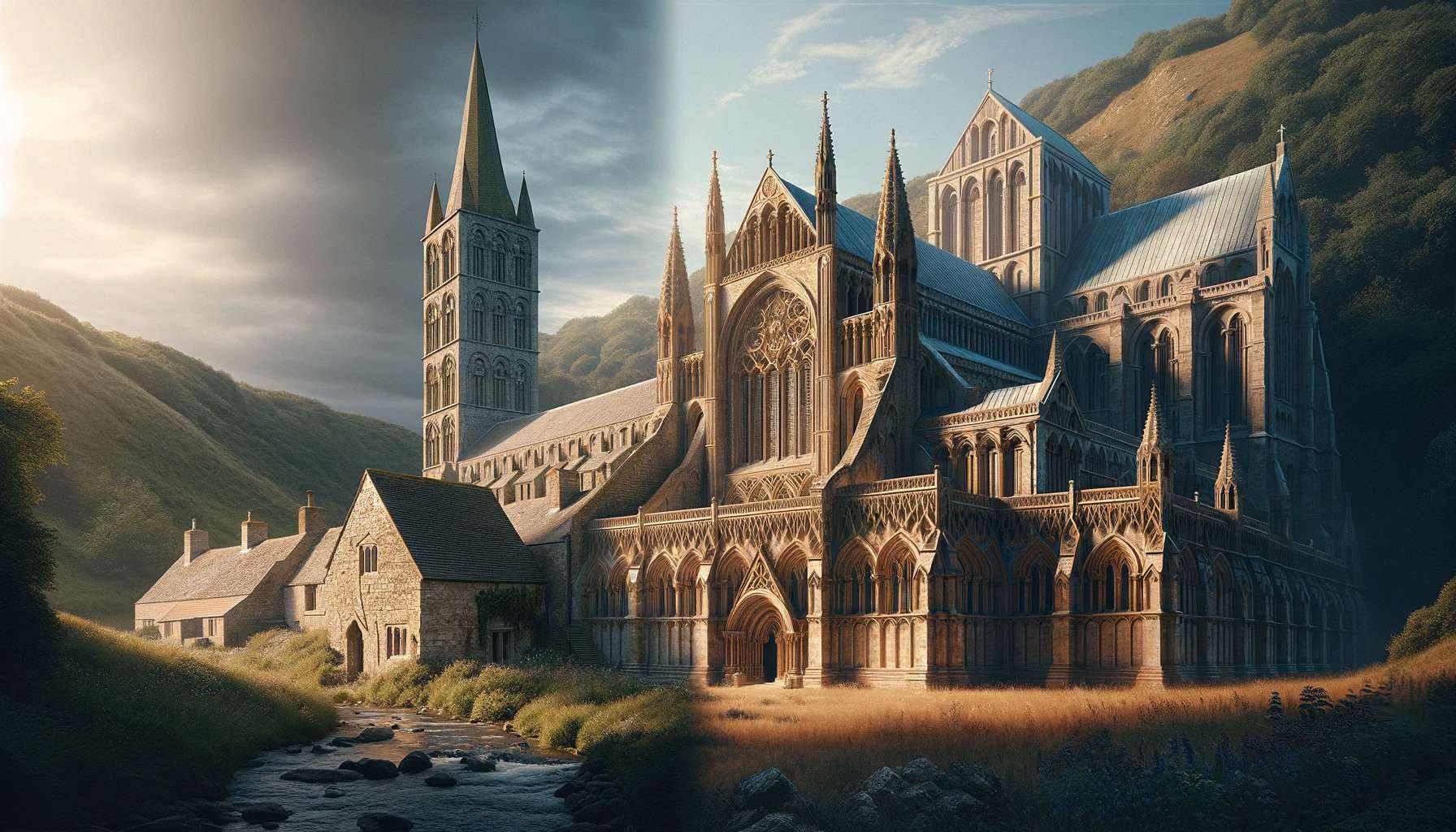

Arts and Culture
What Is The Difference Between An Abbey And A Cathedral
Published: February 16, 2024
Ericka Andersen, an editor at Christian.net, expertly merges digital strategy with content creation, focusing on faith and societal issues. Her communication skills enhance the platform's engaging narratives, fostering meaningful dialogue on belief's impact on society.
Discover the nuances between an abbey and a cathedral in the realm of arts and culture. Explore the architectural, historical, and cultural disparities between these iconic structures.
(Many of the links in this article redirect to a specific reviewed product. Your purchase of these products through affiliate links helps to generate commission for Christian.net, at no extra cost. Learn more)
Table of Contents
Introduction
When exploring the rich tapestry of religious architecture and history, one may encounter the terms "abbey" and "cathedral" and wonder about their distinctions. These two edifices, steeped in tradition and significance, hold unique places in the annals of human culture and spirituality. Understanding the differences between an abbey and a cathedral can deepen our appreciation for the diverse expressions of faith and the enduring legacies of human creativity.
The journey to discern the disparities between an abbey and a cathedral takes us on a captivating odyssey through time and space. It unveils the intricate interplay of religious devotion, architectural prowess, and the societal roles these structures have played throughout history. As we embark on this exploration, we will unravel the distinct characteristics that set these sacred spaces apart, delving into their historical significance, architectural nuances, and religious functions.
The allure of these venerable structures lies not only in their physical grandeur but also in the stories they encapsulate. Each abbey and cathedral bears witness to the aspirations, triumphs, and tribulations of the communities that erected them. By peering into the heart of what defines an abbey and a cathedral, we gain a deeper understanding of the cultural and spiritual landscapes that have shaped civilizations across the ages.
As we delve into the essence of abbey and cathedral, we will uncover the profound meanings embedded within their walls. This exploration will shed light on the diverse ways in which these sacred spaces have served as focal points for worship, artistry, and communal gatherings. Through this journey, we will unravel the threads that bind these structures to the tapestry of human history, enriching our comprehension of the enduring legacies they embody.
Definition of Abbey
An abbey, derived from the Latin word "abba," meaning father, is a complex of buildings used by members of a religious order under the governance of an abbot or abbess. These serene enclaves are often nestled amidst picturesque landscapes, exuding an aura of tranquility and spiritual devotion. Abbots and abbesses, revered for their wisdom and leadership, oversee the daily affairs of the abbey, guiding the community in matters of faith, discipline, and communal welfare.
Abbey architecture typically encompasses a church, living quarters for the religious community, and various auxiliary structures such as cloisters, refectories, and chapels. The abbey church, a focal point of spiritual reverence, stands as a testament to the ingenuity and craftsmanship of its builders, often adorned with intricate carvings, stained glass windows, and soaring arches that inspire awe and contemplation.
Within the abbey's hallowed precincts, the rhythms of monastic life unfold, marked by prayer, meditation, and labor. The tranquil cloisters provide a sanctuary for quiet reflection, while the refectory serves as a communal space for shared meals, fostering a sense of unity and fellowship among the residents. The abbey's library, a repository of knowledge and enlightenment, preserves ancient manuscripts and texts, embodying the intellectual pursuits of the religious community.
Moreover, many abbeys boast expansive gardens and orchards, cultivated by the monks and nuns as a testament to their stewardship of the land and their commitment to self-sufficiency. These verdant sanctuaries offer a respite from the rigors of daily life, inviting contemplation amidst the bounties of nature.
The abbey, as a bastion of spiritual devotion and communal living, serves as a beacon of faith and a haven for seekers of solace and enlightenment. Its enduring legacy is woven into the fabric of history, embodying the timeless values of devotion, humility, and service to humanity. As we unravel the essence of the abbey, we glimpse the profound significance of these sacred enclaves, which continue to inspire and uplift the human spirit across the ages.
Definition of Cathedral
A cathedral, from the Greek word "kathedra" meaning seat, is a grand and imposing edifice that serves as the principal church within a diocese, presiding over the spiritual affairs of the region. It stands as a testament to the ecclesiastical authority and architectural prowess of its builders, embodying the aspirations and devotion of the faithful. Cathedrals are often characterized by their monumental scale, intricate ornamentation, and lofty spires that reach towards the heavens, symbolizing the human yearning for transcendence and divine connection.
At the heart of the cathedral lies the bishop's throne, known as the cathedra, from which the bishop presides over religious ceremonies and imparts spiritual guidance to the congregation. This symbolic seat of authority underscores the cathedral's pivotal role as the episcopal see, signifying its status as the seat of the bishop's governance and spiritual leadership.
Cathedral architecture is a testament to the ingenuity and artistry of the craftsmen and artisans who labored to erect these monumental structures. Characterized by soaring vaults, majestic domes, and ornate facades, cathedrals exude an aura of grandeur and reverence, inviting worshippers to behold the divine in all its splendor. The interior spaces of cathedrals are adorned with exquisite stained glass windows, intricate sculptures, and majestic altars, creating a transcendent ambiance that elevates the soul and inspires awe.
Furthermore, cathedrals often serve as repositories of religious relics, sacred artworks, and historical artifacts, preserving the cultural and spiritual heritage of the diocese. These venerable edifices bear witness to the passage of time, encapsulating the narratives of the communities they have served and the enduring legacies of faith and devotion.
As centers of worship and spiritual contemplation, cathedrals stand as enduring symbols of human aspiration and the quest for transcendence. Their architectural splendor and spiritual significance continue to captivate the hearts and minds of visitors, inviting them to partake in the timeless rituals of faith and to marvel at the profound expressions of human creativity and devotion.
The cathedral, with its resplendent beauty and sacred purpose, remains an indelible testament to the enduring power of faith and the boundless heights of human ingenuity. It stands as a beacon of hope and inspiration, inviting all who enter its hallowed halls to partake in the timeless journey of spiritual enlightenment and communal reverence.
Historical Significance
The historical significance of abbey and cathedral transcends mere architectural grandeur, delving into the annals of human history and spiritual evolution. These venerable structures stand as testaments to the enduring legacies of faith, culture, and societal transformation, bearing witness to the ebb and flow of civilizations across the ages.
Abbeys, with their tranquil cloisters and soaring spires, have been sanctuaries of spiritual devotion and centers of learning since the early medieval period. The establishment of abbeys by monastic orders such as the Benedictines, Cistercians, and Franciscans played a pivotal role in shaping the religious and cultural landscapes of Europe. These monastic communities, guided by principles of humility, prayer, and labor, cultivated the land, preserved knowledge, and provided refuge for pilgrims and travelers, fostering a spirit of communal solidarity and enlightenment.
Moreover, abbeys served as bastions of stability and enlightenment during tumultuous periods of history, offering solace and sustenance to communities ravaged by war, famine, and social upheaval. The illuminated manuscripts, exquisite artworks, and theological treatises produced within the abbey scriptoria bear witness to the intellectual and artistic flourishing that emanated from these sacred enclaves, enriching the cultural tapestry of humanity.
Cathedrals, on the other hand, emerged as symbols of ecclesiastical authority and civic pride, reflecting the aspirations and achievements of burgeoning urban centers. The construction of cathedrals, often spanning decades or even centuries, represented a collective endeavor that unified communities and inspired awe and reverence. These monumental edifices, with their towering spires and resplendent interiors, became the focal points of religious ceremonies, coronations, and civic gatherings, embodying the spiritual and temporal power of the church and the city.
Furthermore, cathedrals bore witness to pivotal historical events, serving as the backdrop for royal coronations, papal decrees, and acts of reconciliation and diplomacy. The architectural evolution of cathedrals, from the Romanesque to the Gothic styles, mirrored the shifting paradigms of faith, art, and governance, encapsulating the zeitgeist of their respective epochs.
In essence, the historical significance of abbey and cathedral reverberates through the corridors of time, encapsulating the triumphs and tribulations of humanity. These sacred structures stand as living chronicles of human endeavor and spiritual aspiration, inviting us to contemplate the enduring legacies they embody and the profound impact they have wielded on the course of history.
Architectural Differences
The architectural disparities between an abbey and a cathedral are emblematic of the diverse expressions of faith, cultural identity, and artistic innovation that have shaped human civilization. These sacred structures, each bearing the indelible imprint of its historical milieu, exhibit distinct architectural features that reflect their unique roles and spiritual functions.
Abbey architecture, characterized by its serene and contemplative ambiance, embodies the ethos of monastic life and communal devotion. The layout of an abbey often revolves around a central cloister, a tranquil courtyard adorned with arcades and verdant gardens, serving as a place of quiet reflection and communal gathering. The abbey church, a focal point of spiritual reverence, exudes an aura of simplicity and humility, with its austere yet elegant design. The soaring arches, ribbed vaults, and understated ornamentation of the abbey church evoke a sense of tranquility and inner contemplation, inviting worshippers to seek solace and enlightenment within its hallowed confines.
In contrast, the cathedral stands as a testament to the grandeur and magnificence of divine worship and ecclesiastical authority. Cathedrals, often constructed in the Gothic style, boast lofty spires, intricate tracery, and expansive stained glass windows that suffuse the interior spaces with ethereal light and transcendent beauty. The soaring vaults and flying buttresses of cathedrals create an impression of verticality and upward aspiration, symbolizing the human yearning for spiritual transcendence and divine communion. The ornate facades and imposing towers of cathedrals, adorned with intricate sculptures and decorative elements, convey a sense of awe and reverence, underscoring the cathedral's role as a monumental expression of faith and human creativity.
Moreover, the layout and spatial organization of cathedrals often reflect their function as the principal church of a diocese, with a prominent nave, choir, and sanctuary that accommodate large congregations and elaborate religious ceremonies. The bishop's throne, or cathedra, serves as a focal point within the cathedral, symbolizing the episcopal authority and spiritual leadership vested in the bishop.
In essence, the architectural disparities between an abbey and a cathedral encapsulate the multifaceted dimensions of religious expression and cultural identity. While the abbey embodies the virtues of simplicity, humility, and communal living, the cathedral exudes the splendor, grandeur, and spiritual authority of the church. These architectural distinctions invite us to contemplate the diverse ways in which human creativity and spiritual devotion have found expression in the sacred spaces that have shaped the course of history.
Religious Function
The religious function of an abbey and a cathedral encompasses a rich tapestry of spiritual rituals, communal worship, and the cultivation of faith and enlightenment. These sacred spaces serve as focal points for the expression of religious devotion, the celebration of sacred rites, and the nurturing of communal solidarity, embodying the timeless values of faith and spiritual contemplation.
Within the tranquil precincts of an abbey, the rhythms of monastic life unfold in harmony with the cycles of prayer, work, and contemplation. The abbey church, a sanctuary of spiritual reverence, becomes the locus of communal worship, where the monastic community gathers to partake in the sacred rituals of the liturgy. The ethereal chants of psalms and hymns resonate within the hallowed confines of the abbey church, creating an atmosphere of transcendence and inner reflection. The abbey's chapels and oratories provide intimate spaces for private prayer and meditation, fostering a sense of spiritual intimacy and personal communion with the divine.
Moreover, the abbey serves as a refuge for pilgrims and seekers of solace, offering spiritual guidance, hospitality, and sustenance to those in need. The abbey's hospice, a testament to the ethos of compassion and charity, extends a helping hand to the weary traveler and the marginalized, embodying the virtues of hospitality and empathy that lie at the heart of the monastic tradition.
In contrast, the cathedral, as the principal church of a diocese, fulfills a multifaceted role as the epicenter of religious authority, communal worship, and sacred pageantry. The cathedral's grandeur and magnificence provide a fitting backdrop for the celebration of solemn liturgies, processions, and religious festivals, uniting the faithful in collective reverence and spiritual exaltation. The cathedral choir, renowned for its celestial harmonies and melodic cadences, elevates the hearts and minds of worshippers, transporting them to realms of transcendent beauty and divine inspiration.
Furthermore, the cathedral serves as a repository of sacred relics, venerable artworks, and historical artifacts, preserving the cultural and spiritual heritage of the diocese. Pilgrims and visitors from near and far converge upon the cathedral, drawn by the allure of its sacred treasures and the promise of spiritual enlightenment. The cathedral's role as a beacon of faith and cultural heritage underscores its significance as a custodian of the collective memory and spiritual legacy of the community it serves.
In essence, the religious function of an abbey and a cathedral transcends the confines of ritual and ceremony, encompassing the profound dimensions of spiritual devotion, communal solidarity, and the pursuit of transcendence. These sacred spaces, with their timeless rituals and enduring legacies, continue to inspire and uplift the human spirit, inviting all who enter their hallowed precincts to partake in the timeless journey of faith and enlightenment.
Conclusion
In conclusion, the distinctions between an abbey and a cathedral unveil a captivating tapestry of human creativity, spiritual devotion, and cultural heritage. These venerable structures, each bearing the indelible imprint of its historical milieu, stand as testaments to the enduring legacies of faith, culture, and societal transformation. The abbey, with its serene cloisters and tranquil spires, embodies the virtues of simplicity, humility, and communal living, serving as a bastion of spiritual devotion and enlightenment. In contrast, the cathedral, with its resplendent beauty and grandeur, stands as a monumental expression of ecclesiastical authority and communal reverence, inviting worshippers to partake in the timeless rituals of faith and to marvel at the profound expressions of human creativity and devotion.
The historical significance of abbey and cathedral reverberates through the corridors of time, encapsulating the triumphs and tribulations of humanity. These sacred structures stand as living chronicles of human endeavor and spiritual aspiration, inviting us to contemplate the enduring legacies they embody and the profound impact they have wielded on the course of history. From the illuminated manuscripts and exquisite artworks produced within the abbey scriptoria to the monumental cathedrals that became the focal points of religious ceremonies and civic gatherings, the historical significance of these sacred spaces transcends mere architectural grandeur, delving into the annals of human history and spiritual evolution.
Moreover, the architectural disparities between an abbey and a cathedral encapsulate the multifaceted dimensions of religious expression and cultural identity. While the abbey embodies the virtues of simplicity, humility, and communal living, the cathedral exudes the splendor, grandeur, and spiritual authority of the church. These architectural distinctions invite us to contemplate the diverse ways in which human creativity and spiritual devotion have found expression in the sacred spaces that have shaped the course of history.
In essence, the religious function of an abbey and a cathedral encompasses a rich tapestry of spiritual rituals, communal worship, and the cultivation of faith and enlightenment. These sacred spaces serve as focal points for the expression of religious devotion, the celebration of sacred rites, and the nurturing of communal solidarity, embodying the timeless values of faith and spiritual contemplation. The abbey and the cathedral, with their timeless rituals and enduring legacies, continue to inspire and uplift the human spirit, inviting all who enter their hallowed precincts to partake in the timeless journey of faith and enlightenment.
The journey to discern the disparities between an abbey and a cathedral has unveiled the intricate interplay of religious devotion, architectural prowess, and the societal roles these structures have played throughout history. By peering into the heart of what defines an abbey and a cathedral, we gain a deeper understanding of the cultural and spiritual landscapes that have shaped civilizations across the ages.
